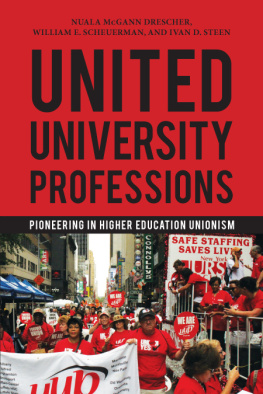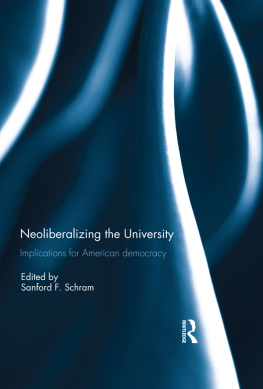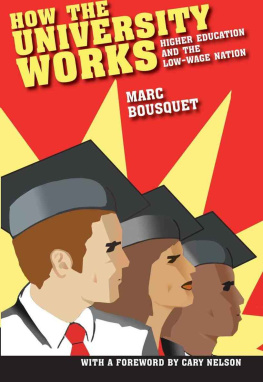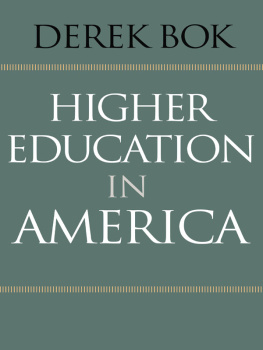UNITED UNIVERSITY PROFESSIONS
UNITED
UNIVERSITY
PROFESSIONS
PIONEERING IN HIGHER EDUCATION UNIONISM
Nuala McGann Drescher,
William E. Scheuerman, and Ivan D. Steen
Cover photograph taken by Karen Mattison.
Published by State University of New York Press, Albany
2019 State University of New York
All rights reserved
Printed in the United States of America
No part of this book may be used or reproduced in any manner whatsoever without written permission. No part of this book may be stored in a retrieval system or transmitted in any form or by any means including electronic, electrostatic, magnetic tape, mechanical, photocopying, recording, or otherwise without the prior permission in writing of the publisher.
For information, contact State University of New York Press, Albany, NY
www.sunypress.edu
Library of Congress Cataloging-in-Publication Data
Names: Drescher, Nuala McGann, author. | Scheuerman, William, author. | Steen, Ivan D., [date], author.
Title: United University Professions : pioneering in higher education unionism / Nuala McGann Drescher, William E. Scheuerman, and Ivan D. Steen.
Description: Albany : State University of New York Press, [2019] | Includes bibliographical references and index.
Identifiers: LCCN 2018033283 | ISBN 9781438474670 (hardcover : alk. paper) | ISBN 9781438474687 (pbk. : alk. paper) | ISBN 9781438474694 (ebook)
Subjects: LCSH: United University Professions (Association : N.Y.)History. | Universities and collegesEmployeesLabor unionsNew York (State)History. | College teachers unionsNew York (State)History.
Classification: LCC LB2335.865.U6 D74 2019 | DDC 331.88113781209747dc23
LC record available at https://lccn.loc.gov/2018033283
10 9 8 7 6 5 4 3 2 1
Contents
Acknowledgments
This book would not have been possible without the encouragement and help of many individuals. UUPs president Fred Kowal directed his staff to assist in any way possible, and thats exactly what they did. Special thanks go to our old friend and colleague Maureen Karius, who answered tough questions and provided gaggles of legalistic information in her own quiet and efficient manner. Karen Mattison opened the vault of the communications department to give us access to back issues of The Voice ; Tina George and Doreen Bango assisted whenever called upon. And Lynn Alderman made us feel welcome and comfortable as she coordinated the staffs efforts to provide us with the material we needed. A special thanks to Lynn for having boxes of files shipped to the UUP office in Albany from the unions warehouse in Rochester, New York. In the spirit of academic and union solidarity and collegiality, our friends and colleagues of the SUNY Senate cooperated with this endeavor every step of the way. We thank you. Senate staffer Carol Donato deserves special recognition for making material from the senates archives available and generally assisting us in every way imaginable. Finally, our colleagues at the University at Albany Librarys M. E. Grenander Department of Special Collections and Archives deserve special recognition. Words cannot adequately describe the assistance Brian Keough, Jodi Boyle, and the entire staff provided. With incredible efficiency they helped us in so many ways, and always with smiles on their faces. We also express our appreciation for the assistance of the staffs of the New York State Archives and Records Administration and Cornell University Librarys Kheel Center. Thanks also to those, including Rowena Blackman-Stroud, Tina Kaplan, Peter Martineau, Ray Peterson, Jo Schaffer, and Louise Scheuerman who read early drafts of selected chapters. Finally, thanks must go to Michael Rinella and the good people at SUNY Press for the patience and support. Needless to say, the authors appreciate all the help and support many people provided, but this work is the sole responsibility of the authors, who are responsible for its shortcomings.
Thank you.
Introduction
This is a book about the United University Professions (UUP), the nations largest higher-education union, its history, its many challenges, and its many accomplishments. Its members work at four doctorate-granting university centers; four medical schools, three of which have hospitals; fifteen liberal arts institutions; four technical colleges (formerly the two-year agricultural and technical colleges); and five specialized colleges. On its inception in 1973, UUP became a one-of-a-kind statewide organization that many observers viewed as a grand experiment in higher-education collective bargaining. Given the wide spectrum of different types of institutions represented by UUP, it follows that the union is also the most professionally diverse. Across SUNY, UUP represents faculty and professional staff, originally called nonteaching professionals, as well as librarians, who were labeled as academic without enjoying the advantages and prerogatives of their regular academic colleagues. Its members range from Nobel Prizewinning scientists, neurosurgeons, National Book Award winners, and philosophers to trout farmers, glass blowers, shepherds, and almost everything in between. As a statewide union, UUP has to negotiate a single contract acceptable to its extraordinarily diverse professional membership.
UUP not only represents a professionally disparate membership, its members are also spread across the state of New York. Geographically, SUNYs institutions range from Plattsburgh near the Canadian border south to the Brooklyn Health Science Center in southern New York City, and from Fredonia near the Pennsylvania border in western New York to Stony Brook on eastern Long Island. The costs of living, particularly housing costs, vary greatly in different parts of the state. This further complicates UUPs ability to serve its members effectively. In addition to dealing with professional diversity in a single contract, the unions agreement with the state must also address geographical differences in living costs.
The decision by New Yorks Public Employment Relations Board (PERB) to establish UUP as a statewide bargaining unit may have anointed UUP as the largest higher-education union in the country, but it also presented the emerging union with an array of challenges. The first of these were obstacles that arose from the describes, New Yorks private institutions of higher learning dominated the states higher-education community throughout much of the states history. As early as the eighteenth century, New Yorks politicians gave financial succor to the private schools, a generosity that accelerated throughout the nineteenth century and continues even to this day. Not surprisingly, the privates enjoyed their privilege and used their political clout to maintain and protect it. Consequently, New York became the last state in the union to form a state university. When the state finally responded to increasing public pressures to establish SUNY, it tightly wrapped the new university in a straitjacket of limitations designed by the private sector. The new university was underfunded and underenrolled. The scope of programs it offered was limited, and most of its faculty lacked doctoral degrees. Despite the legislatures visionary mission statement, the new university was not established to compete with private institutions. It was designed to play a subordinate or ancillary role.
SUNYs subordinate role changed during the Rockefeller years. Committed to building a first-rate public university, Nelson Rockefeller convinced New Yorks legislators to pour hundreds of millions into SUNY. Under Rockefellers leadership the university expanded rapidly. In anticipation of the growing enrollments of the baby-boomer generation, Rockefeller directed SUNY to acquire or construct new campuses. Taxpayer dollars modernized and expanded existing campus facilities, including the construction of new student dormitories at campuses across the state. The universitys growth, of course, was not limited to the expansion of its brick-and-mortar facilities. SUNY also invested additional dollars in an effort to upgrade a second-rate faculty. The university paid higher salaries, encouraged research, and recruited hundreds of new, more highly trained faculty. Teaching remained a top priority, but research and publishing assumed a larger role in the universitys culture.








